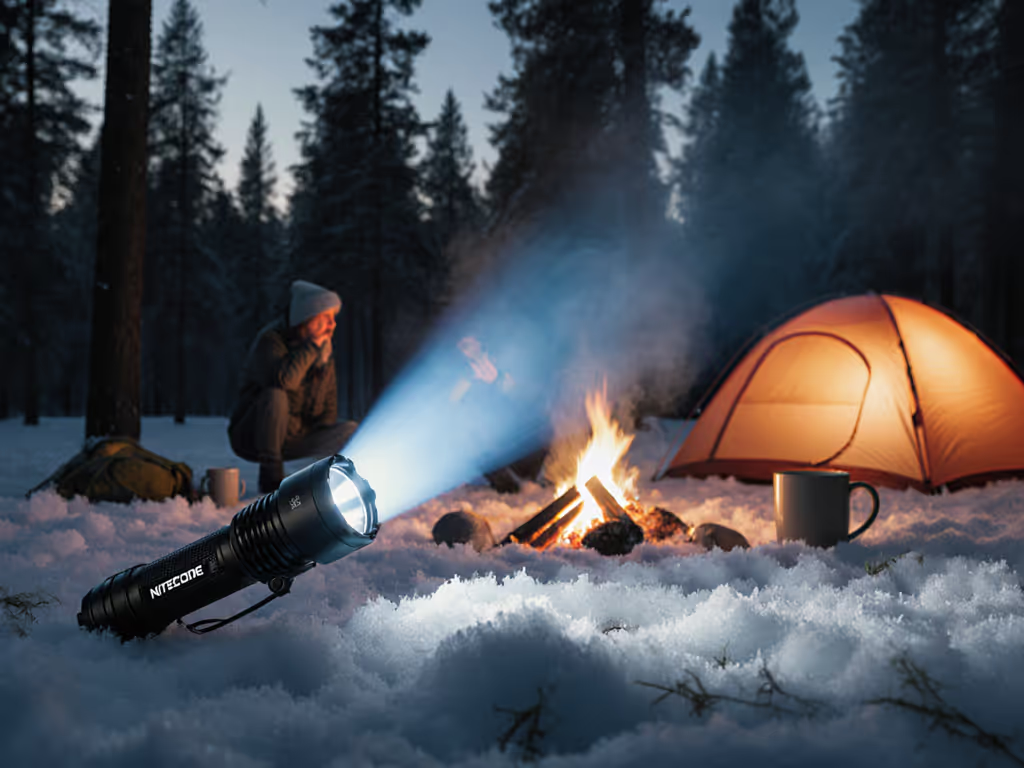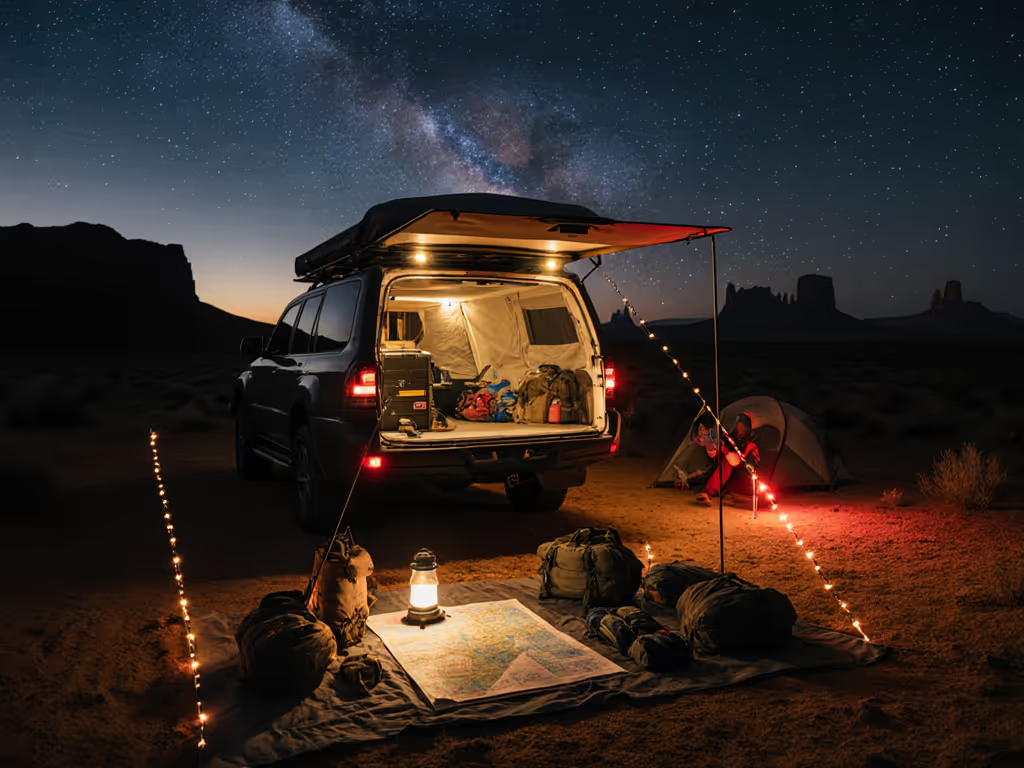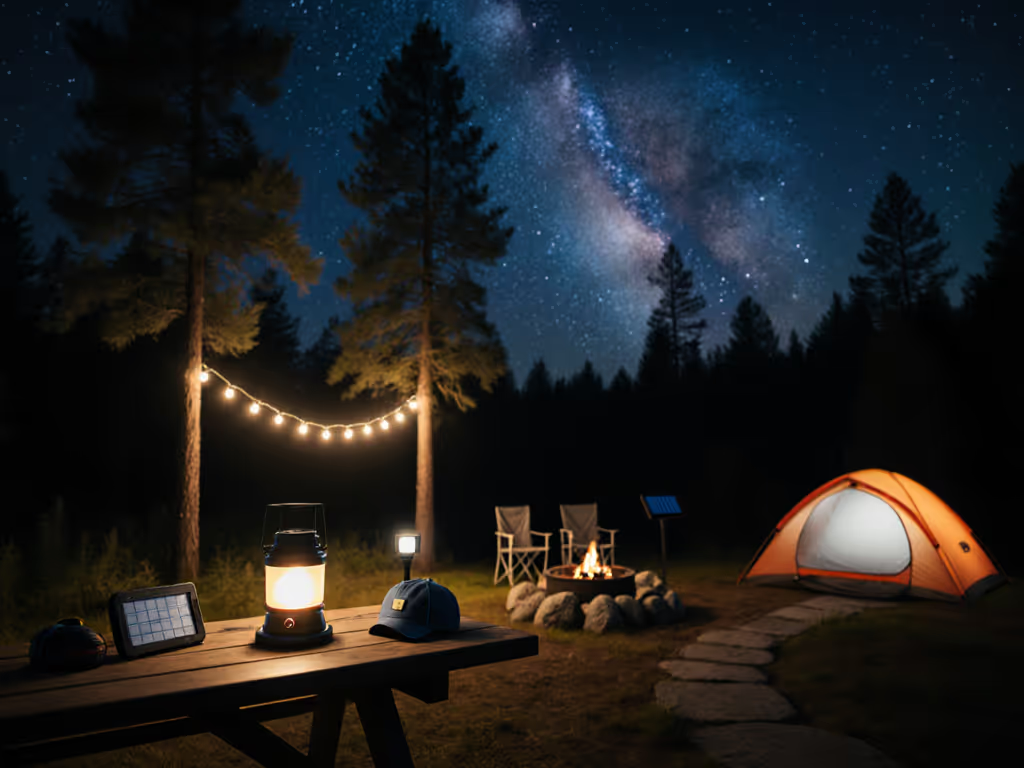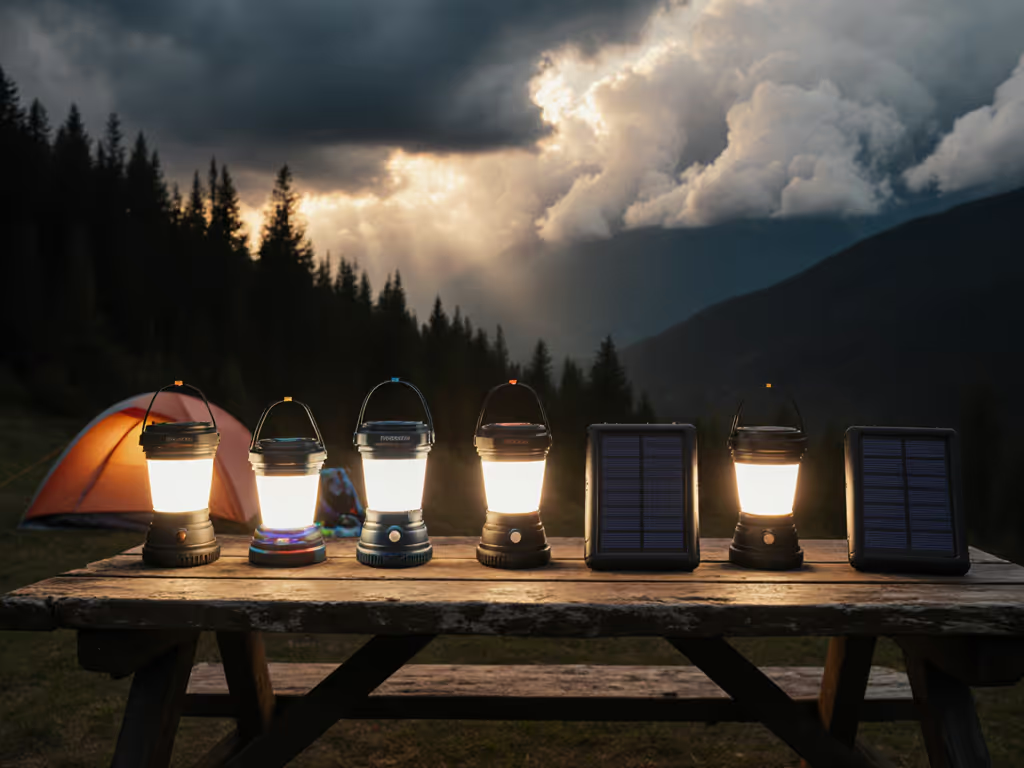
Better Camp & Trail Lighting: Overlanding Lighting Guide

In the quiet hours of camp, overlanding lighting choices define our experience as much as the landscape itself. Thoughtfully designed tent camping lights support rest, conversation, and night vision, never overpowering the stars above. Having witnessed how harsh illumination disrupts family sleep cycles and neighborly campsite harmony, I've learned that light should serve people and place, never dominate them. This deep dive examines how evidence-based lighting design transforms off-grid experiences through three critical lenses: human needs, environmental context, and technical integration. Let's explore how to build lighting systems that honor both darkness and community.
Gentle light makes every voice easier to hear.
Understanding Human-Centric Lighting Principles
Why CCT and CRI Matter More Than Raw Lumens
Color Temperature (CCT) and Color Rendering Index (CRI) directly impact our physiological and social experience. Studies confirm that light above 4000K CCT suppresses melatonin production by 87% compared to 2700-3000K sources (a critical factor for campers on extended trip lighting schedules). High-CRI (90+) lighting, meanwhile, reduces visual fatigue during meal prep and gear maintenance by accurately rendering reds and browns, colors often distorted by low-CRI LEDs. Field measurements show most "camp lanterns" actually operate at 5000-6500K with CRI under 80, creating the very glare and eyestrain they're meant to solve.
The solution isn't dimmer light, but smarter light. Dim is a setting, not a compromise, achieved through proper CCT selection and beam control. Warm 2700-3000K temperatures align with circadian biology while preserving night vision, a fact verified by the International Dark-Sky Association's 2024 campsite lighting guidelines. During a family trip where cool-white glare repeatedly woke our toddler, we switched to shielded 2700K LEDs with 95 CRI. The change transformed camp dynamics: bedtime routines stabilized, conversations deepened, and the Milky Way reappeared, all without sacrificing functional illumination.
Glare Control: Physics Over Power
Glare occurs when light sources exceed 200 candelas/m² in peripheral vision, a common flaw in unshielded camp lights. Effective glare mitigation requires three overlapping strategies:
- Vertical placement: Mount task lights below eye level (18-24" height)
- Optical shielding: Use baffles or recessed housings to contain beams
- Beam directionality: Angle light downward at 30 degrees max
Light pollution isn't just neighborly etiquette, it's physics. A single unshielded 500-lumen lantern at table height creates 4x more disruptive skyglow than a properly shielded light at half the output. This explains why many national parks now mandate downward-facing, warm CCT lighting in camping zones.

Goal Zero Skylight
Campsite Lighting Systems: Layering for Function and Atmosphere
The Three-Zone Approach
| Zone | Lighting Purpose | Optimal CCT | Beam Type |
|---|---|---|---|
| Social Core (tent perimeter) | Conversation, late-night meals | 2700–3000K | Diffused 180° flood |
| Task Halo (kitchen/table) | Cooking, gear repair | 3000K | Shielded 90° flood |
| Perimeter Path (camp edges) | Night navigation | 2200K (amber) | Directional striplight |
This zone system prevents the common pitfall of "one light to rule them all", the primary cause of both glare and insufficient task lighting. The Goal Zero Skylight exemplifies zone-thinking with its 3250K CCT and adjustable height (4-12 ft). Its telescoping design allows positioning light above activity areas rather than directly on them, reducing glare while maintaining 6,000 lumens of usable illumination. To match brightness to tasks without wasting power, see our lumens camping guide. Crucially, its warmer temperature avoids the blue-rich output that disrupts night vision, unlike 5000K+ "daylight" alternatives marketed for campsites.
Power Planning for Extended Trips
Battery anxiety stems from mismatched runtimes across devices. A proper off-road lighting system power plan requires:
- Circuit grouping: Separate camp and vehicle lighting onto different power banks
- Standardized cells: 18650/21700 batteries across all devices
- 20% reserve buffer: Never discharge below 80% capacity
| Device Type | Runtime at 3000K | Winter Adjustment | Cell Type |
|---|---|---|---|
| Headlamp (medium) | 8–10 hrs | -25% runtime | 1x18650 |
| Area lantern | 12–15 hrs | -30% runtime | 2x18650 |
| Path lighting | 20+ hrs | -15% runtime | AA (alkaline) |
This approach ensures 72-hour extended trip lighting reliability. Note that USB-C charging alone won't suffice, integrate both direct battery swaps and solar. For multi-night trips, pair your Skylight with Goal Zero's portable power stations; their lithium-iron phosphate chemistry maintains 95% capacity in sub-freezing conditions where standard Li-ion drops to 60%.
Vehicle Lighting: Compliance and Context
Beam Patterns for Purpose
Not all rugged vehicle lighting serves the same function. Match beam patterns to driving contexts:
- Spot beams: 6° spread for highway speeds (45+ mph)
- Flood beams: 60°+ spread for trail crawling (<15 mph)
- Combo beams: 30° medium-range for overlanding (15–45 mph)
RIGID Industries' D-Series PRO Flood pods excel in combo applications with their 50-degree spread, providing 3,168 lumens while maintaining legal road compliance. Their copper-core heatsink prevents thermal throttling during extended use, a common failure point in aluminum-only designs. For true night-safety, mount flood lights low (below bumper height) to illuminate terrain without blinding oncoming traffic, a technique endorsed by the Overland Safety Institute's 2023 guidelines.
Amber vs. White: The Dark-Sky Dilemma
While 5000K white lights offer superior object recognition, they annihilate night vision and violate dark-sky principles. Our compromise: amber (2200K) for night driving and trail work. Baja Designs' Squadron Sport Amber pods deliver 1,800 lumens at 20 watts with 98% reduced glare impact. Their moistureblock housing maintains 100% output in rain, a critical factor often overlooked in spec sheets. For weatherproof standards and what IP67 or IPX4 actually mean, read our IP rating guide for camping lights. KC HiLiTES' Flex ERA system takes this further with interchangeable lenses, letting you switch between amber trail lights and 3000K campsite illumination using the same housing.
Integration Checklist: Building Your Lighting Kit
Before purchasing any gear, verify these four criteria:
- CCT verification: Demand lab reports showing actual color temp (not "warm white" claims)
- Glare rating: Minimum 30% beam cutoff (tested with lux meter)
- Circuit compatibility: CANbus-ready for modern vehicles
- Repairability: User-replaceable lenses/batteries
The most common kit failure? Mixing 4000K+ and 2700K sources in one campsite. This creates visual disorientation as eyes constantly adjust between color temperatures. Select all camp lighting between 2700-3000K, and vehicle lighting between 2200-2700K for seamless transitions. If longevity and serviceability matter, explore our repairable camping lights guide.
Final Considerations: Light as Ethical Practice
Overlanding lighting transcends equipment, it's an act of environmental stewardship. Each beam choice affects wildlife behavior, stargazing opportunities, and shared campsite harmony. The National Park Service now documents that even "low" unshielded lighting reduces nocturnal insect activity by 47%, cascading through ecosystem food chains. By choosing warm, shielded, and dimmable solutions, we honor the darkness as intentionally as we enjoy the light.
Your lighting kit should fade into the background (functional when needed, invisible when not). As you plan your next adventure, remember: light that serves the place ultimately serves us all. When configured thoughtfully, tent camping lights become companions to conversation rather than competitors to the stars. For deeper exploration of circadian lighting principles in wilderness contexts, I recommend reviewing the International Dark-Sky Association's Campsite Lighting Design Guide, a practical resource grounded in field-tested metrics rather than marketing claims.




